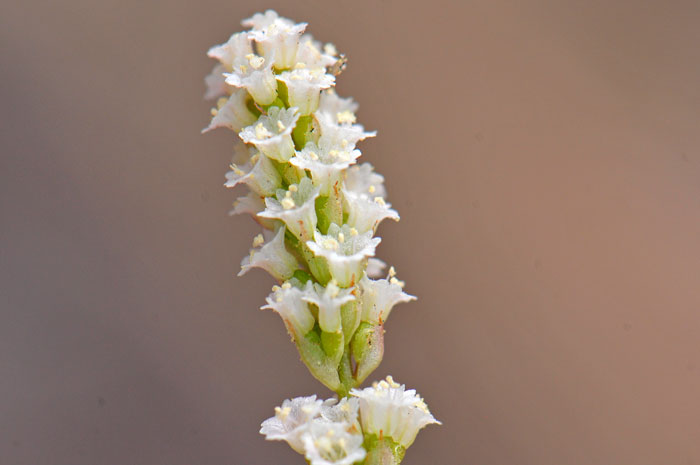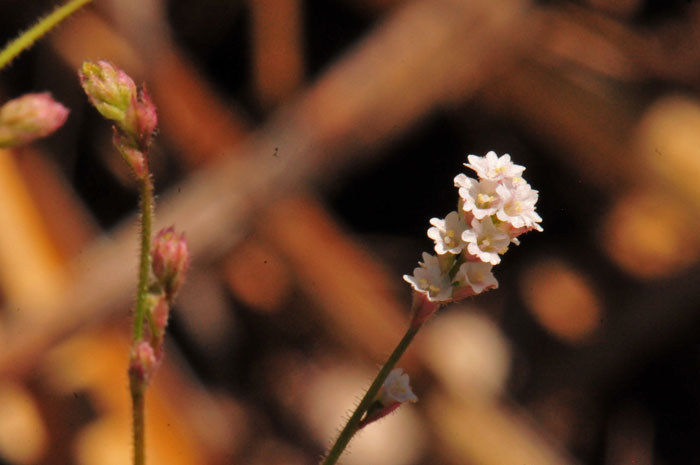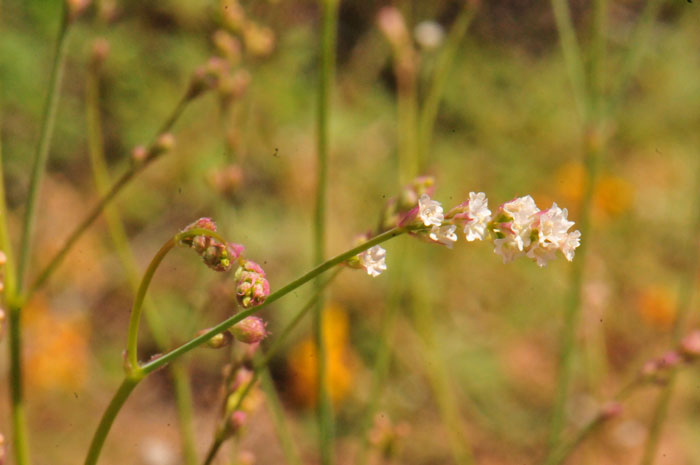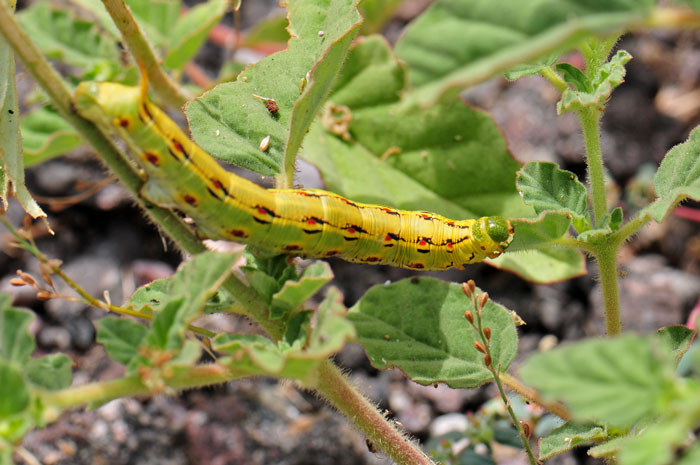Boerhavia wrightii, Largebract Spiderling




Scientific Name: Boerhavia wrightii
Common Name: Largebract Spiderling
Also Called: Large-bract Spiderling, Spiderling, Wright's Boerhavia, (Spanish: Makkumi Ha-jewed)
Family: Nyctaginaceae, Four O’clock Family
Synonyms: ()
Status: Native
Duration: Annual.
Size: Up to 2 feet or more.
Growth Form: Forb/herb; erect, stems branched from base, glandular hairs
Leaves: Green; leaf shape variable lanceolate to oblong-ovate, leaf tips acute.
Flower Color: White, pale pink; persistent reddish bracts subtending the "flower" which technically is a (perianth) inflorescence spike-like, fruits wrinkled between ridges.
Flowering Season: July to September, August to December in California.
Elevation: Up to 4,000.
Habitat Preferences: Dry, sandy places.
Recorded Range: Largebract Spiderling is found in the southwestern United States in AZ, CA, NM, NV, TX . It is also native to Baja California and northern Mexico.
North America & US County Distribution Map for Boerhavia wrightii.
U.S. Weed Information: No information available.
Invasive/Noxious Weed Information: No information available.
Wetland Indicator: No information available.
Threatened/Endangered Information: No information available.
The Plant List includes 243 scientific plant names of species rank for the genus Boerhavia. Of these 105 are accepted species names.
Comments: Largebract Spiderling leaves are one of the favorite foods of White-Lined-Sphinx Moth, Hyles lineata and is so named because of its large reddish bracts subtending the "flower" or perianth.
Also see in Southwest Desert Flora Scarlet Spiderling, Boerhavia coccinea, Coulter's Spiderling, Boerhavia coulteri, Fivewing Spiderling, Boerhavia intermedia and Climbing Wartclub, Boerhavia scandens.

